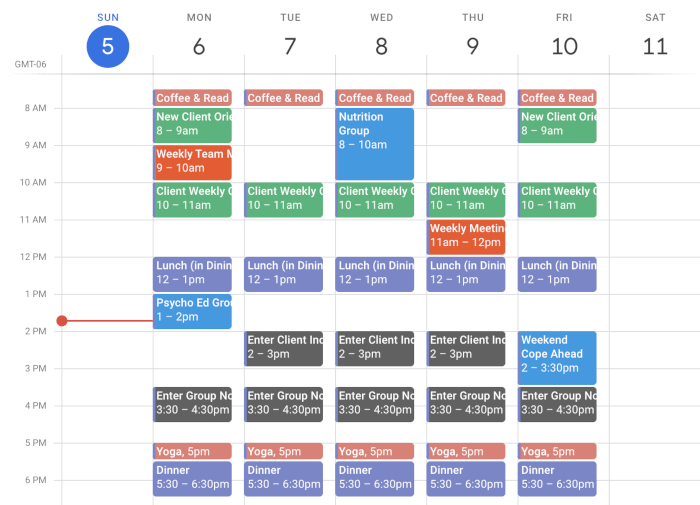Picture this: you arrive at work Monday morning, grab your coffee, and instead of diving into the same mundane tasks that consume hours of your week, you watch as automation for repetitive tasks handles them seamlessly in the background. While you focus on strategic initiatives and creative problem-solving, automated systems are processing emails, organizing files, scheduling meetings, and updating spreadsheets. This isn’t a futuristic fantasy—it’s a reality that forward-thinking professionals are already experiencing.
The modern workplace is drowning in repetitive tasks that offer little intellectual challenge but demand significant time investment. Research from McKinsey & Company reveals that 45% of work activities could be automated using current technology, yet most professionals continue to manually handle routine processes that could run themselves. By implementing strategic automation for repetitive tasks, you can reclaim 10+ hours weekly and redirect that energy toward high-impact activities that actually move your career and business forward.
Why Automation for Repetitive Tasks Saves 10+ Hours Weekly
The mathematics of automation are compelling and well-documented. A comprehensive study by Accenture found that knowledge workers spend approximately 41% of their time on repetitive tasks that could be automated or delegated. For a standard 40-hour work week, that translates to more than 16 hours of potentially automatable work.
Consider the cumulative impact of seemingly minor repetitive tasks. Checking and organizing emails consumes an average of 2.6 hours daily according to Adobe’s Email Usage Study. Social media management for businesses typically requires 3-5 hours weekly for basic posting and engagement. Data entry and file organization can easily absorb 4-6 hours weekly depending on your role. When you add routine communication, scheduling, and administrative tasks, the total quickly exceeds 10 hours per week.
The Zapier State of Business Automation report demonstrates that companies implementing comprehensive automation strategies see average time savings of 2.6 hours per employee per day. This efficiency gain doesn’t just benefit individual productivity—it creates competitive advantages for organizations that embrace systematic automation approaches.
Beyond time savings, automation reduces human error rates significantly. Manual data entry has error rates ranging from 1-5% depending on complexity, while properly configured automated systems achieve accuracy rates exceeding 99.5%. This improvement in accuracy prevents costly mistakes and reduces time spent on error correction and quality control processes.
The Hidden Time Drains: Identifying Your Most Repetitive Work Tasks
Before implementing automation solutions, you need to identify which repetitive tasks are consuming the most time and energy. Many professionals underestimate how much time they spend on routine activities because these tasks are scattered throughout their day and feel “quick” in isolation.
Start by conducting a comprehensive time audit over one full work week. Track every task that takes longer than five minutes, noting both the activity and duration. Pay special attention to tasks that you perform multiple times daily or weekly. Common time drains include:
- Email management: Sorting, filtering, responding to routine inquiries, and organizing attachments
- Data entry: Moving information between systems, updating spreadsheets, and creating routine reports
- Social media posting: Scheduling content, responding to comments, and cross-platform publishing
- File organization: Renaming files, moving documents to folders, and maintaining digital archives
- Meeting coordination: Scheduling, sending reminders, and distributing agendas
- Invoice and expense processing: Creating invoices, tracking payments, and organizing receipts
Look for patterns in your time audit data. Tasks that occur daily or multiple times per week are prime automation candidates. Also identify “task chains”—sequences of related activities that always happen together, such as receiving an email attachment, saving it to a specific folder, and updating a tracking spreadsheet. These interconnected processes often benefit most from comprehensive automation solutions.
Consider the emotional cost of repetitive tasks alongside time investment. Tasks that you find particularly tedious or that frequently interrupt deep work sessions should receive priority for automation, even if they don’t consume the most total time. The mental energy freed up by eliminating these interruptions often provides benefits beyond simple time savings.
Best Automation Tools That Actually Work (Free and Paid Options)
The automation tool landscape offers solutions ranging from simple, single-function apps to comprehensive workflow platforms. Selecting the right tools depends on your specific needs, technical comfort level, and budget constraints. Here’s a breakdown of proven options across different categories and price points.
Free Automation Tools
Zapier offers a robust free tier supporting up to 100 tasks monthly across five different “Zaps” (automated workflows). This limitation works well for testing automation concepts and handling moderate-volume routine tasks. Google Apps Script provides powerful automation capabilities for Google Workspace users at no additional cost, though it requires basic programming knowledge.
Microsoft Power Automate includes a free tier with 750 runs monthly, making it excellent for Microsoft 365 environments. IFTTT (If This Then That) specializes in simple trigger-action automations and offers extensive free functionality for basic workflows connecting popular consumer apps and services.
Premium Automation Platforms
Make (formerly Integromat) stands out for complex automation requiring multiple steps, conditional logic, and data transformation. Their visual scenario builder makes sophisticated workflows accessible to non-programmers, though the learning curve is steeper than simpler tools.
Zapier’s paid tiers remove task limitations and unlock advanced features like multi-step workflows, custom logic, and priority support. For businesses processing hundreds or thousands of automated tasks monthly, the investment typically pays for itself through time savings alone.
Enterprise-level solutions like UiPath and Automation Anywhere provide robotic process automation (RPA) capabilities for large-scale operations requiring desktop application integration and complex business logic.
When evaluating tools, consider integration capabilities with your existing software ecosystem. The best automation tool is one that connects seamlessly with the applications you already use daily. Productivity apps often include built-in automation features that might meet your needs without requiring additional subscriptions.
Email Management: Automate Your Inbox to Save 3 Hours Daily
Email automation represents one of the highest-impact areas for time savings, particularly for professionals who receive 50+ messages daily. The average knowledge worker spends 2.6 hours daily managing email, but strategic automation can reduce this to under 30 minutes while improving response quality and consistency.
Start with intelligent filtering and automatic labeling. Gmail’s advanced filters can automatically categorize incoming emails based on sender, subject line keywords, or content patterns. Create filters for newsletters, notifications, client communications, and internal messages. Each category can be automatically labeled, archived, or forwarded to appropriate team members without manual intervention.
Implement template responses for frequently asked questions. Most professionals answer similar inquiries repeatedly—pricing questions, scheduling requests, or information about services. Create detailed email templates covering common scenarios, then use tools like Boomerang or Mixmax to automatically suggest appropriate templates based on incoming message content.
Schedule email sending to optimize recipient engagement and your own workflow. Research from HubSpot shows that emails sent Tuesday through Thursday between 10 AM and 2 PM receive highest open rates. Rather than sending emails immediately as you write them, batch compose multiple messages and schedule delivery for optimal timing.
- Auto-forwarding rules: Route specific types of emails to appropriate team members or departments
- Follow-up automation: Automatically remind you to follow up on important emails that haven’t received responses
- Meeting scheduling: Use tools like Calendly or Acuity Scheduling to eliminate back-and-forth scheduling emails
- Email parsing: Automatically extract data from routine emails and add it to spreadsheets or CRM systems
Consider implementing voice command automation for email composition during commutes or while multitasking. Voice-to-text technology has improved dramatically, enabling efficient email drafting without keyboard input.
Social Media and Content: Streamline Your Marketing Workflow
Social media management consumes substantial time for businesses and personal brands, but strategic automation can maintain consistent online presence while reducing hands-on management to minutes daily. The key is balancing automation efficiency with authentic engagement that builds genuine relationships with your audience.
Content scheduling forms the foundation of social media automation. Tools like Buffer, Hootsuite, and Later enable batch creation and scheduling of posts across multiple platforms weeks or months in advance. Dedicate 2-3 hours monthly to content creation and scheduling rather than posting reactively throughout each week.
Repurpose content systematically across different platforms and formats. A single blog post can become multiple social media posts, an email newsletter section, and material for video content. Zapier can automatically create social media posts when you publish new blog content, ensuring consistent promotion without manual effort.
Implement automated content curation to maintain active profiles without constant original content creation. Tools like Feedly combined with automation platforms can share relevant industry articles with your commentary, positioning you as a knowledgeable resource while requiring minimal time investment.
Advanced Content Automation Strategies
Set up automated responses for common social media interactions. Facebook Messenger and Instagram for Business support automated initial responses to messages, providing immediate acknowledgment while you prepare personalized follow-ups.
Use AI writing assistants to accelerate content creation for social media posts, blog articles, and marketing copy. These tools can generate initial drafts that you refine and personalize, significantly reducing the time from concept to published content.
Track engagement patterns to optimize posting schedules automatically. Social media management tools analyze when your audience is most active and can automatically adjust posting times for maximum visibility and engagement without constant manual optimization.
Data Entry and File Management: Automation for Repetitive Tasks Made Simple
Data entry and file organization represent some of the most tedious yet time-consuming aspects of modern work. These tasks are also among the easiest to automate effectively, offering immediate and measurable time savings with minimal setup complexity.
Implement intelligent file naming and organization systems. Tools like Hazel for Mac or Shutter for Windows can automatically rename and sort files based on content, creation date, or source application. Set up rules to move downloaded files to appropriate folders, rename screenshots with meaningful descriptions, and archive old documents to long-term storage.
Automate data collection from web sources using tools like Web Scraper or ParseHub. These platforms can extract information from websites, online directories, or competitor sites and compile it into spreadsheets without manual copy-and-paste work. This approach is particularly valuable for market research, lead generation, and competitive analysis.
Connect different software systems to eliminate duplicate data entry. When information exists in one system, it should automatically populate related fields in other applications. For example, new customer information in your CRM should automatically create corresponding entries in your accounting software, email marketing platform, and project management system.
- Form automation: Use tools like Typeform or Google Forms to collect information and automatically populate databases
- Receipt processing: Apps like Expensify or Shoeboxed automatically extract data from receipt photos and categorize expenses
- Invoice generation: Automatically create invoices based on time tracking data or completed project milestones
- Report compilation: Schedule regular reports that pull data from multiple sources and format them consistently
Cloud storage platforms like Google Drive, Dropbox, and Microsoft OneDrive offer automation features that sync files across devices, back up important folders automatically, and share documents with appropriate permissions based on predefined rules.
Advanced Workflow Automation: Connecting Multiple Apps and Systems
The true power of automation emerges when you connect multiple applications and systems to create seamless workflows that span your entire digital workspace. Advanced workflow automation eliminates the friction between different tools and creates unified processes that handle complex business operations without constant human intervention.
Multi-step workflows typically involve conditional logic and data transformation between different applications. For example, when a new lead fills out a contact form on your website, an advanced automation might add them to your CRM, send a personalized welcome email series, create a follow-up task in your project management system, and notify your sales team through Slack—all triggered by that single form submission.
Make excels at these complex scenarios through its visual scenario builder that supports branching logic, data filtering, and error handling. You can create workflows that behave differently based on specific conditions, such as lead source, geographic location, or engagement level. This flexibility enables sophisticated automation that adapts to different situations without requiring multiple separate workflows.
Integration Strategies for Maximum Impact
Focus on connecting your most frequently used applications first. Common high-impact integrations include CRM systems with email marketing platforms, project management tools with time tracking applications, and accounting software with expense management systems. Each connection eliminates manual data transfer and reduces opportunities for errors.
Implement centralized notification systems that aggregate updates from multiple sources. Rather than checking several applications throughout the day, configure workflows that send important updates to a single location—whether that’s Slack, Microsoft Teams, or a dedicated dashboard. This consolidation reduces context switching and helps maintain focus on important work.
Create backup and recovery automations for critical business processes. Advanced workflows can monitor for failures in primary systems and automatically implement contingency procedures, such as switching to backup payment processors during outages or notifying key personnel when critical systems become unavailable.
Use webhook integrations for real-time data synchronization between custom applications or platforms that don’t offer native integrations. Webhooks enable instant communication between systems, ensuring that updates in one application immediately trigger appropriate actions in connected systems without polling delays or manual intervention.
Measuring Your Success: Tracking Time Saved Through Task Automation
Measuring the impact of your automation efforts provides crucial feedback for optimization and justifies continued investment in automation tools and strategies. Effective measurement goes beyond simple time calculations to include quality improvements, error reduction, and overall productivity gains.
Establish baseline measurements before implementing automation solutions. Track how much time you currently spend on tasks you plan to automate, including both direct task time and associated overhead like switching between applications or correcting errors. Use time tracking tools like Toggl or RescueTime for accurate baseline data rather than relying on estimates.
Monitor both quantitative and qualitative improvements after automation implementation. Quantitative metrics include time saved per day, error rates, and task completion speed. Qualitative improvements might include reduced stress levels, improved work-life balance, and increased capacity for strategic thinking and creative problem-solving.
Calculate the financial impact of your time savings using realistic hourly value estimates. If automation saves 10 hours weekly and your time is worth $50 per hour, that represents $2,600 monthly in value creation—easily justifying investments in premium automation tools and ongoing optimization efforts.
- Task completion rates: Automated processes often achieve higher completion rates than manual workflows
- Consistency metrics: Measure how automation improves standardization across repeated processes
- Capacity gains: Track increases in high-value work as routine tasks become automated
- Error reduction: Document decreases in mistakes and rework requirements
Create regular review cycles to optimize existing automations and identify new opportunities. Monthly automation reviews should examine workflow performance, identify bottlenecks, and assess whether changing business needs require workflow modifications. Automation is not a “set and forget” strategy—it requires ongoing attention to maintain maximum effectiveness.
Share success stories and lessons learned with team members or professional networks. This documentation helps refine your automation strategy and can inspire others to implement similar efficiency improvements. Consider maintaining an automation log that records what worked, what didn’t, and why certain approaches succeeded or failed.
The journey toward comprehensive task automation represents a fundamental shift from reactive work management to proactive system design. By implementing automation for repetitive tasks across email management, social media, data entry, and complex workflows, you can realistically reclaim 10+ hours weekly while improving accuracy and reducing stress levels.
Success with automation requires a strategic approach that begins with careful task identification, progresses through tool selection and implementation, and continues with ongoing measurement and optimization. The time invested in setting up these systems pays dividends immediately and compounds over time as you identify additional automation opportunities and refine existing workflows.
Start with one high-impact area—whether that’s email management, social media scheduling, or data entry automation. Implement a solution, measure the results, and use that success as motivation to tackle the next repetitive task consuming your valuable time. The tools and strategies are readily available; the only question is how quickly you’ll begin transforming your work experience through the power of intelligent automation.



